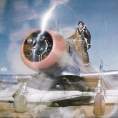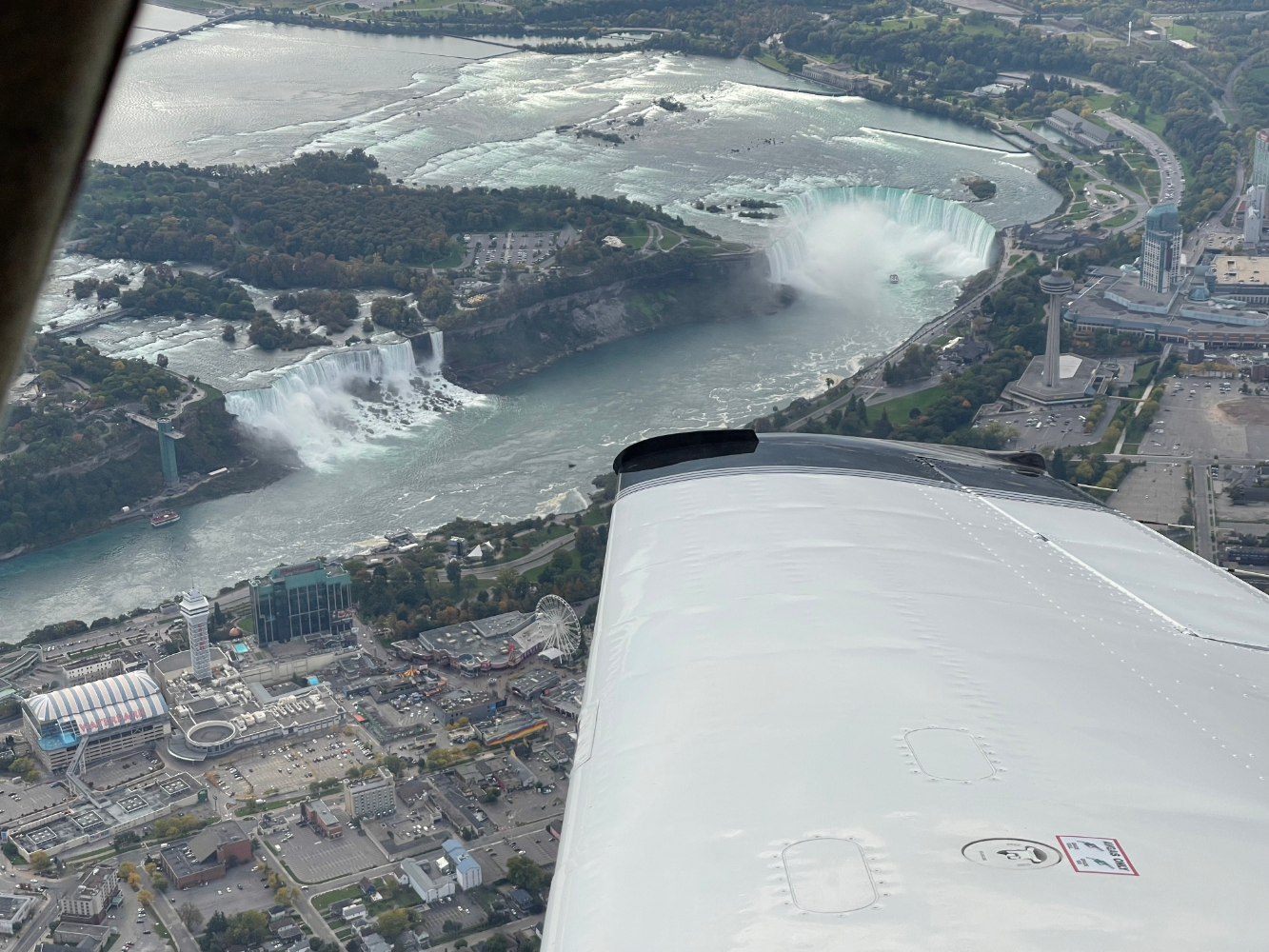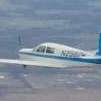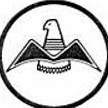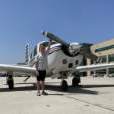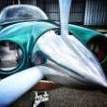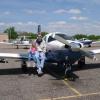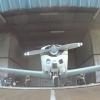Leaderboard
Popular Content
Showing content with the highest reputation on 10/07/2022 in all areas
-
Running LOP or ROP is always a great read. I love all of the comments and people's experiences. One thing that is oftentimes overlooked is not just fuel mixture, but the sparkey bolts. My plane really struggled with taxiing and LOP operations were just ok. I took out the Champion massives and checked them out for resistance. 10 failed out of 12 and 3 were open resistance. Not sure how this plane ever ran with these horrible plugs. I then changed out to Tempest fine wire plugs on top and bottom and just that fast, no more issues with taxiing, hot starts are a cinch and LOP is 11.5 GPH at 167 TAS at 11,000' (having FIKI is a speed penalty) Clean oil at changes and cooler temps. What exactly is the downside? Next up is the installation of electronic ignition.6 points
-
The bad weights were on the early 1967 F models. There were about 140 of these F models that used these weights. They mention the smooth skins elevators so as to eliminate all others. The ribbed elevators began in 1969 models. Their concern is to get them all and they could have been acquired from salvage and put on other models pre 1969. The flat skin F model elevators are different from flat skin C D &E models. The difference is the number of ribs in the elevators. The F has 9 ribs in each elevator. Other model flat skin elevators have only 4 ribs in each elevator. This post has located two more planes with bad elevators today.5 points
-
You won't "harm" the engine by running ROP but it does get expensive in terms in fuel consumption and increased maintenance. I run 50 LOP at 65% on my O with 12.3 GPH. I use GAMI injectors. I have run hard at 75% 50 to 100 ROP to break in cylinders. What I notice is how much cleaner my oil analysis comes back LOP and when I do my borescope at oil change there is a marked change in the cleanliness of the cylinders and valves. In short, less fuel means a cleaner engine. A cleaner engine means less maintenance in particular with cylinders and valves not to mention sludge development which is a problem with the IO-550 because it is a small sump engine. Finally you will find your cylinders run cooler LOP, much cooler and that will give you longer cylinder life. For me, 325 is high temp at 65%, most the time I run 300 to sub 300 numbers. In the winter I have to keep an eye because a #1 & 2 can start to tickle the lower limit of 250 running LOP. So if you can get the speed you need, why not run it in the cleanest and coolest way possible? I agree with your priorities. Get yourself comfortable with flying the airplane, and once that occurs you can start looking at precision engine management4 points
-
3 points
-
2 points
-
2 points
-
2 points
-
How far we’ve come. Years ago, people used to worry about risks of operating in ways contrary to the manufacturer’s recommendations. Now, there seems to concern about the risks of following them.2 points
-
Agree, new to the airplane, don't worry about a few trips ROP. People ran ROP for MANY years. I did the same bring my plane home from TX. I ran ROP, to reduce the new things by at least one factor.2 points
-
I suspect it'd be evident if the hybrid part were in place, but if there was doubt and one wanted to know for certain, especially if the airplane is expected to have that part number in place, it'd probably be worth taking some paint off to make sure. That said, since it isn't an AD (at least yet), and compliance isn't required, if it looked clean like that it might not be worth worrying about too much. If there were cracks evident, it might be worth looking at more closely or it might be more obvious where the paint was cracking at the bi-metal corrosion sites.2 points
-
I think you meant to say free SavvyAnalysis account, which gives you access to all our analysis tools. But the Savvy MX, QA and Pro accounts are all fee based subscriptions, with the cheapest being the Savvy Pro at $129/yr for a Mooney which gets you our Pro Analysis service (me! )2 points
-
1 point
-
Ooh, I was fooled by the wing struts. I didn't think 170s ever had those double struts, but I guess the early ones did.1 point
-
1 point
-
1 point
-
I had to buy 36" of the rod. I'm going to see how many of them I can make in two hours.1 point
-
They built 751 airplanes in 1967. Seemed like a lot until I looked at Cessna’s numbers…Just looking at 172s, they built 1,436 in 1965. 1,597 in 1966. 839 in 1967 and 1,206 in 1968.1 point
-
Another example of the problem with an amendment to conform to the expected route to try to get an "as filed."1 point
-
It most likely broke because your mechanic or helper put all his weight on end of the armrest to lean over or lift themselves up. That is a long lever. I would think it is easily reparable. If the pins are sheared they just need replacement. Where are the other pieces? Did they fall inside the seat back? This diagram is from an R. It was discussed last year.1 point
-
I used to run 6 Cessna 402s as freighters. Some as much as 7 hours a day. Ran them all LOP. We concentrated on tight cooling, good fuel injection, good ignition. 98% of my cylinders made it to TBO, and these were Pacific Continental remans. 100% of my turbos made it to TBO. Now these engines were not cross flows like the IO-550 which is designed to run LOP. They were TSIO-520s. There is no reason not to run these engines LOP.1 point
-
An argument could be made these things were built to run ROP as that’s what the book settings were for decades. LOP however is not a newly discovered thing, many have been since WWII at least. While not a big sample size from what I have seen with big block Conti’s the ones run ROP seem to have fewer cylinder problems. Within reason you can’t hurt an engine ROP, but you can LOP by not being lean enough at high power. A dummy or a person with a lot going on can run ROP safely, LOP requires a little more attention to detail. Just remember you can’t be too LOP, the danger is in not being LOP enough so if there is any doubt, lean it out if LOP, just like if there is any doubt ROP, enrichen it. My advice is to run ROP until you have everything down pat, it’s all automatic and your bored, then try the LOP thing, but save it for when your not in a hurry, if your in a hurry stick with ROP. Don’t be learning it IMC or in a busy ATC area Biggest things I’ve seen for long engine life is frequent oil changes and low power as in 65% or less cruise. LOP or ROP Ref fine wire plugs, they made more difference in running smooth LOP on my 540 and 520 than Gami injectors did, my 540 just wouldn’t run LOP worth a darn, the 520 did, but as I wasn’t buying gas for it, I ran it everywhere at 2500 and WOT if less than 25” and 100 ROP for 1500 hours without a hiccup, when I left it was still running strong with original cylinders. Above 25” put it in it’s 5 min limit, it was a 300 HP IO-520, for 5 min, 285 continuous. Oh, for the record I fly my J model almost exclusively LOP, I am not against LOP. It has its place, as I’m Retired now and not in a hurry, LOP fits my flying.1 point
-
I fly a '67F (one of the models in question) and I'm pleased that Mooney is showing interest and taking action on these older airframes. Good that they're showing signs of life. Agree additional parts support would be a great thing. One of the reasons I like my old F, is I feel like I can find salvage parts if needed. So far, never had a problem with parts. The real question, is how the heck did Mooney surge to produce 536 F's in 1967. It was a great year.1 point
-
Send it in for the flat rate repair so you get all new screen, buttons, and knobs. Garmin has an LED screen now too, which is much better. I just got a 530 back with this repair done. Good for another 15 years.1 point
-
I guess I was looking for someone to tell me definitely that parts were not available for repair. would make my decision easier, do I spend 10 AMU on new avidyne box, 17 for garmin box or 2 amu for repairing this one and kicking the eventual upgrade down the road. my friend says not to spend one more nickel on the 430, but he is also a lot more spendy than me. One thought I had is get a new box for primary, be it garmin or avidyne and then repair radio 2. Spends 15 amu pretty quick. I am a big believer in waiting.......1 point
-
1 point
-
I did that. Worked great. If there was any trimming left on my end it was minimal and minor sanding. They do not drill the holes but that was super simple. Just put them on the wing, marked the centers with a sharpie and drilled it out with the step bit, which they will also supply you along with a piece of scrap material to practice on.1 point
-
Probably 99% of AD’s come from SB’s, it takes awhile to issue an AD and they need a reason, like accidents or an SB. If I had an airplane with the suspect weights I’d try real hard to get compliant ones from the recycled parts chain soon. I’ve not even read the SB, but from what you guys say it sure sounds like it will become an AD. Besides if you have the suspect parts you want to get rid of them ASAP it sound like anyway.1 point
-
I really cannot understand why anyone would purchase anything from these guys. Why would you think you are going to get any support from them? I spoke with the guy at the Mooney Summit about this product and there is no way I would purchase this product for my aircraft. Literally the ONLY selling point is price.1 point
-
The Prime median in Greenwich is a historical physical point. Historical being the operative word.1 point
-
Especially while flying your wife to Chicago. Not a good time to experiment with new engine management techniques. If you employ the BMP technique (Big Mixture Pull), and the fire goes out, it could increase the pucker factor. If I was doing it, I would be at 10,000 over my home airport on a perfectly clear, windless, mid-week day (very little traffic). But that's me.1 point
-
I got a request for an Ident this morning going into a Class B and then again tonight going into a Class C. VFR on both flights and it was the typical spitting out the code and asking for an Ident as one instruction.1 point
-
The prime Meridian in Greenwich is not WGS 84 measurement. It is not a matter of "correct" it is a matter of the datum being used consistently. As long as you use the same datum to mark places and use that datum in navigational measurement it is all correct.....for that datum. Think of it as using different base numbers to describe a numerical amount. I bet if you change the datum to OSGB36 your GPS would be close if not spot on. Nor is a datum perfect for each region of the world. Interestingly in the Bahamas if you use the 1816 datum which used sticks and chains, it is most accurate datum....in that area but things shift quickly by the time you get to the Turks. WGS 84 represents some compromises in some places, but by using it everything can be described accurately even if the surveyors chains do not count off the correct amount because of GPS. No longer do you count chain links, you count time and mark the point accordingly using the GPS 84 datum. http://www.thegreenwichmeridian.org/tgm/articles.php?article=71 point
-
Cheapest $129 in aviation, but don’t tell them that... If you like the data you have now, you’ll love the detailed knowledge @kortopates provides in the Engine Data Analysis Reports. The AI driven FEVA Reports are awesome too. And you periodically receive report cards that show you trends for all of your data (%Pwr, Max/Avg CHT, etc) and how you’re doing vs other similar types. I send them my borescope photos for an expert opinion as well. Now if only I could take some better photos… [emoji848]1 point
-
Funny thing is, the WGS84 Datum does not have 0 degrees longitude correct. I took a portable GPS to Greenwich UK and placed it ON the Prime Meridian. And the GPS said it was off by almost 100 yards. The GPS places it out in the parking lot.1 point
-
1 point
-
12 volt version of the new Mooney switches. Carling tech. Hope to have pictures soon.1 point
-
1 point
-
"Flat Earth Model"? There is no such thing. Are you trying to be funny? Not obvious if so. The web page you cite is ancient by GPS standards, written waaaay back in 2001. Before WAAS. Anyhow, the design of the GPS system uses the WGS84 Datum, which pretty accurately defines the shape of our planet as an oblate spheroid, with something like a 20 km greater radius at the equator than at the poles. Vertical position errors tend to be larger than horizontal errors because of satellite geometry. The apparent velocity of the GPS satellites is faster when directly overhead, so that most satellites used to calculate the position solution are nearer the horizon than the vertical- they spend more time near the horizon than overhead. Small signal timing errors due to atmospheric effects on signal propagation contribute a larger component in the vertical direction when the satellite is nearer the horizon. The WAAS system provides receivers with an error model to minimize these random propagation errors and their impact on the horizontal and vertical position estimates. A contemporary reference: https://sage-answer.com/what-datum-is-used-by-gps/ A WAAS GPS system reports the expected vertical error. If the system is working correctly, it's less than 2 m. Because signal availability is not guaranteed, and to avoid problems with equipment failures, we use encoders.1 point
-
In order to avoid confusion: This is not correct, even though the units may be the same. Work is a force applied over a distance, while torque is a force applied at a distance. A force/torque can also be applied over a rotational distance to yield work. Also, I think you might try to compare the torque/rpm curves of an O-300 engine with a GO-300 engine. The GO-300 will turn much faster to deliver a similar prop rpm, so the chart may indicate more rapid torque decline towards the higher rpm.1 point
-
1 point
-
Just to warn everybody about the future "support" we will get the AeroCruze 100 / Trutrak for our Mooneys. I contacted Duncan to purchase the separate parts and unfortunately got the "support" one would expect from BendixKing these days. I already purchased AeroCruze 100 for another certified airplane, but decided it is better to put in Mooney, as it is a better traveling machine as we all know. I also have the BendixKing STC Letter of Approval permitting me to install Aero Cruze 100 issued to my Mooney. Here is the reply I got from Duncan: "Duncan is the master distributor for the BendixKing AeroCruze 100 Mooney STC Kits, other dealers purchase thru Duncan as well." "Duncan will be selling this AeroCruze 100 STC "as a full kit" all material needed is included, this is based on Duncan's discussions with BendixKing sales. " "Our best suggestion is for operators to purchase a full kit, and get themselves on the back-order list." When I talked to Andrew Barker some time ago, he mentioned that I should simply call one of the vendors to purchase the parts I need for the installation, which seems to be impossible. My reply to Criss Gress from Duncan was bounced with the following message "Message blocked Your message to chris.g@duncanaviation.com has been blocked. See technical details below for more information. The response from the remote server was: 550 permanent failure for one or more recipients (chris.g@duncanaviation.com:blocked) " My conclusions: 1. Like most other manufacturers, Trutrak did have some problems with heads and servos failures. One of these digiflight II heads failed in some weird and scary state is sitting in my hangar. Since Trutrak was acquired by BendixKing the only option was to upgrade to the next generation Vizion autopilot. So, in the future, the only option to replace the failed parts will be to purchase a new "full kit" from the "master distributor" - Duncan, who claims to be a monopoly and will charge appropriate. 2. Even if Duncan will agree to sell you replacement parts in the distant future, expect to pay close to the price of the "full kit". Many people have similar "great" experience with S-Tec for example. This is what usually happens with a single "master distributor". Before purchased by BendixKing, Trutrak itself was an exception, thanks to Andrew Barker, who had a different philosophy. But looks like he lost control of the company since that, so the philosophy also changed. 3. The situation about who owns AeroCruze 100 STC for Mooney installations is murky to say the least. Sort of a gray area. Proceed at your own risk. 4. I might be wrong, but the consensus on the boards seems to be that many, if not most, GA pilots do not even consider BendixKing products when researching their avionics upgrade options. I would like to see arguments why AeroCruze 100 should be an exception. So far, the product goes the same direction as other BendixKing products for GA. I base my conclusion on many complains from other pilots and my own calls to BendixKing trying to obtain any help. Non was ever provided. 5. At this point, other options look more attractive. In one option available now, despite higher initial price, one gets a more capable autopilot and, also important, better support in case of future problems. Personally, I put my project on hold until either the situation with BendixKing AeroCruze 100 is resolved or, more likely, another system from a well known and well respected manufacturer with a great customer support is finally certified. When I called that other great manufacturer recently to ask if I have to purchase the "full kit" to install their glass panel into my certified airplane or I can skip some components of STC I already have and some others that I plan to implement differently, the response was the following: - I have to purchase only the components required by STC (very few BTW) - if I already have some components required by STC, I should send those components back to them before the installation for "FAA blessing" - free of charge - although some of my already installed components will not interface with their system, they recommended me to keep them as the "setup works great as it is". I wish all you guys who already put yourselves "on the back-order list" with Duncan best of luck. You will need it in the future! Vik1 point
-
Seems like I remember someone on MS looking for replacement weights just a few weeks ago due to cracks.1 point
-
1 point
-
It seems he had his expected clearance from some source, and had loaded it, but did not amend his flight plan, so it would be Cleared As Filed. AND, he did not realize that Garmin parses airways into every fix along that airway. They do that to help if you get a Cleared Direct to some fix further down the airway. ANd, he had his head up his posterior.1 point
-
Last Wed I went for a flight to LBX because I could. Had some great crab cakes and got some fuel. Flew home in the mostly dark and did a carrier landing. Other than that no gripes.1 point
-
Wonder if anything has changed in the 32 YEARS since that article was published?1 point
-
I’d fix them asap. Garmin is telling dealers they have a fixed amount of parts left for the 430’s and will stop support once they’re gone. That and supply chain issues for old tech displays and electronics means the end is in sight1 point
-
1 point
-
I have some PFM Engine gauges somewhere. They have been hanging around my office since we converted a PFM to a Liquid Cooled Rocket back in the late 90's. I actually have about 20 hours of PFM time. Very cool aircraft. Definitely underpowered, but a joy to fly, way ahead of its time. Bob Kromer told me after my question to him a few months ago (along with 100+ other Mooney fans at the MooneyMax convention) that Porsche asked Mooney to delay the PFM for 6 months in order to develop a higher horsepower Turbo version of the engine for aircraft. He said it would have been the perfect Airplane had they waited. Bob said Mooney refused to wait and came out with the PFM in 1987 before it was ready. He said that was one of two things he regretted in his Mooney career. The other was the '301'. He need to write a mini-novela on that one.1 point
-
I like the Gee Bee baffle kit, too. I fly out of the desert and Central Valley sometimes when the OAT is over 100 F. If I climb out at 2700 RPM my CHTs get high. If I climb out at 2400 RPM I never have a problem. If replacing the baffles doesn’t work you might try running richer/leaner or have someone who actually knows what they’re talking about take a look at your graphs. I have no idea how to interpret them but I know @kortopatesdoes. Hopefully you purchased a Savvy subscription and submitted a ticket as well as doing their GAMI lean checks and LOP mag checks. Otherwise, you are just going to waste your time getting advice from randos on the internet that doesn’t let the fact that they have no formal training stop them from authoritatively telling you what to do. Like me.1 point

